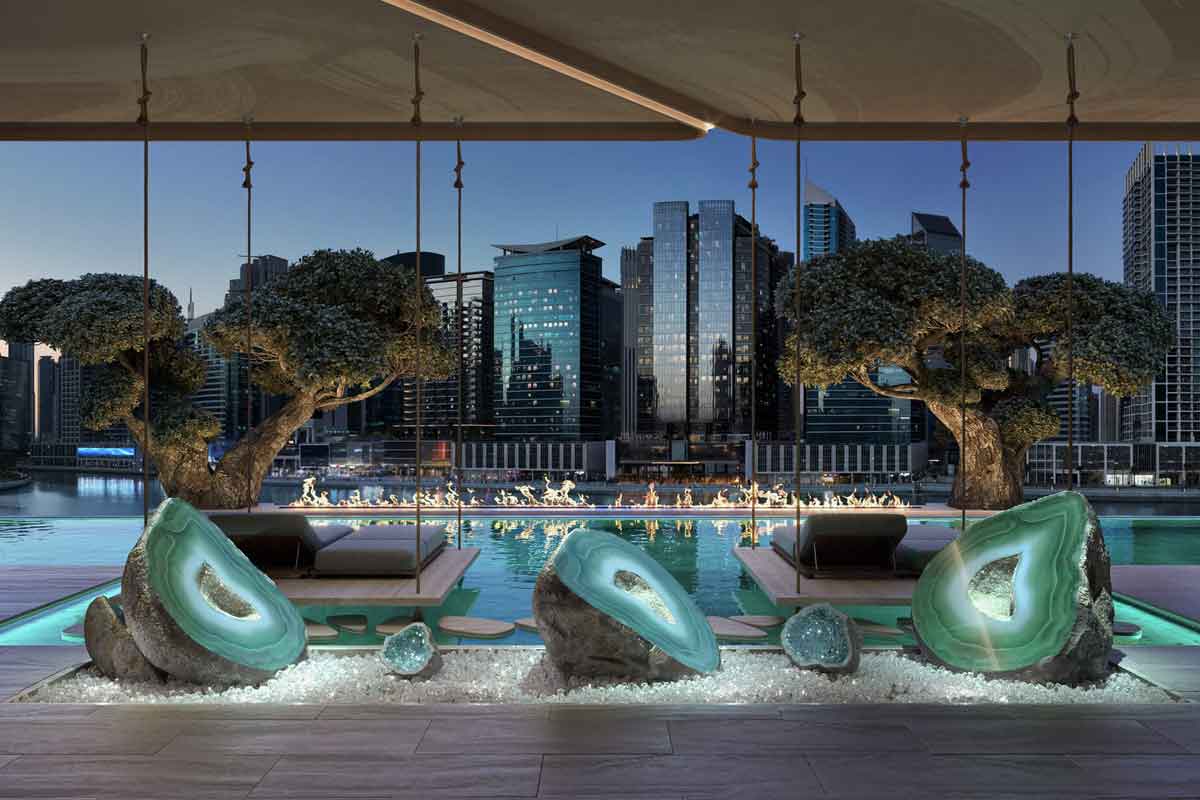Once the main domain of spiritual shops and niche collectors, crystals and energy stones have evolved into a global business with a market that spans wellness, luxury goods, and interior design. Growing consumer demand for holistic wellness and alternative therapies has propelled the crystal trade into a billion-dollar global industry – and the Middle East is emerging as a market of increasing significance.
According to a 2024 report by Research and Markets, the global crystals and gemstones market was valued at $31.8 billion in 2023 and is projected to reach $44.1 billion by 2030, growing at a compound annual growth rate (CAGR) of 4.5 per cent.
The surge is fuelled by rising interest in energy healing, mindfulness, and sustainability – as well as the growing influence of social media platforms such as Instagram and TikTok, which have amplified the visibility of crystal aesthetics and their purported benefits.
From alternative to mainstream
Crystals such as amethyst, rose quartz, citrine, and jade are no longer confined to metaphysical shops. Global retailers including Anthropologie, Sephora, Huda Beauty, and major department stores have introduced crystal-infused water bottles, skincare tools, jewellery, and home decor into their product lines.
Data from the Global Wellness Institute indicates that the mental wellness market, which includes meditation, mindfulness, and energy healing, was valued at $181 billion in 2022. Crystals, while not broken out as a standalone segment in the report are categorised under ‘complementary and alternative therapies’ which is among the fastest-growing categories of the wellness industry.
While some consumers purchase crystals for their specific aesthetic qualities, many cite their use in promoting emotional balance, clarity, and stress reduction – claims that have been debated in scientific circles.

Several studies report no measurable difference between the effects of real and placebo crystals on test subjects, yet anecdotal testimonials continue to drive sales.
In the Gulf, luxury and wellness often intersect, making the region a strong market for crystal-focused businesses. High-end retailers in Dubai and Riyadh report steady demand for decorative pieces, luxury jewellery, and bespoke crystal installations in homes, spas, and hotels.
The Global Wellness Institute’s Global Wellness Economy Monitor 2023 states that the wellness economy in the Middle East and North Africa reached $108.7 billion in 2022, with the UAE and Saudi Arabia emerging as regional leaders in wellness tourism, personal care, and traditional therapies. While crystals represent a niche segment within this broader ecosystem, their popularity is growing as consumers seek holistic well-being experiences rooted in both ancient traditions and modern spirituality.
According to Rachel Akmakjian from BriteCo, “At the end of the day, yes, crystals are worth money. How much money they’re worth will, of course, differ according to a very large number of factors.”
The industry has also reflected in the real estate market, Eywa, a luxury residential project in Dubai currently under development by R.evolution. The 48-residence building on the Dubai Water Canal is marketed explicitly as the world’s first energy-focused residential development. The design incorporates over 1.5 million crystals embedded in its structure intended, according to the developer, to enhance the flow of positive energy and improve residents’ well-being.
Sustainability challenges for crystals
The crystal trade, however, faces scrutiny over sustainability and ethical sourcing. Quartz, the most abundant and commonly sold crystal is mined extensively in Brazil, Madagascar, and parts of Africa and Asia.
Reports from advocacy groups such as Human Rights Watch have highlighted concerns about labour practices and environmental impact in some mines.
In response, several global brands have introduced certification processes to trace the origins of their stones and ensure that mining practices meet ethical standards. However, there is currently no universally recognised certification for ethically sourced crystals, leaving consumers reliant on retailer claims.
Beyond retail, crystals are finding a place in high-end hospitality. Luxury hotels and resorts, including several in the UAE, now offer crystal-infused spa treatments and energy-focused interior design elements.
According to the Global Wellness Institute, wellness tourism, which frequently incorporates elements like crystal therapy, was valued at $651 billion globally in 2024, with annual growth rates outpacing general tourism.
Even tech-adjacent products have entered the category: crystal-charged water bottles, sound bath equipment, and wearable crystal jewellery integrated with fitness trackers are appearing in premium wellness markets.
While the industry is growing, precise figures on the crystal trade remain difficult to measure due to its fragmentation across luxury goods, alternative therapies, and raw materials. Analysts caution that much of the trade remains informal, particularly at the wholesale level in developing countries, and that sales are often unrecorded or lumped into larger categories like “decorative stones” or “jewellery.”
What is clear, however, is that the market is evolving rapidly. Social media continues to democratise access to knowledge about crystals, while luxury retailers elevate them as status symbols. At the same time, increasing consumer awareness about environmental and social responsibility may reshape supply chains in the years ahead.

